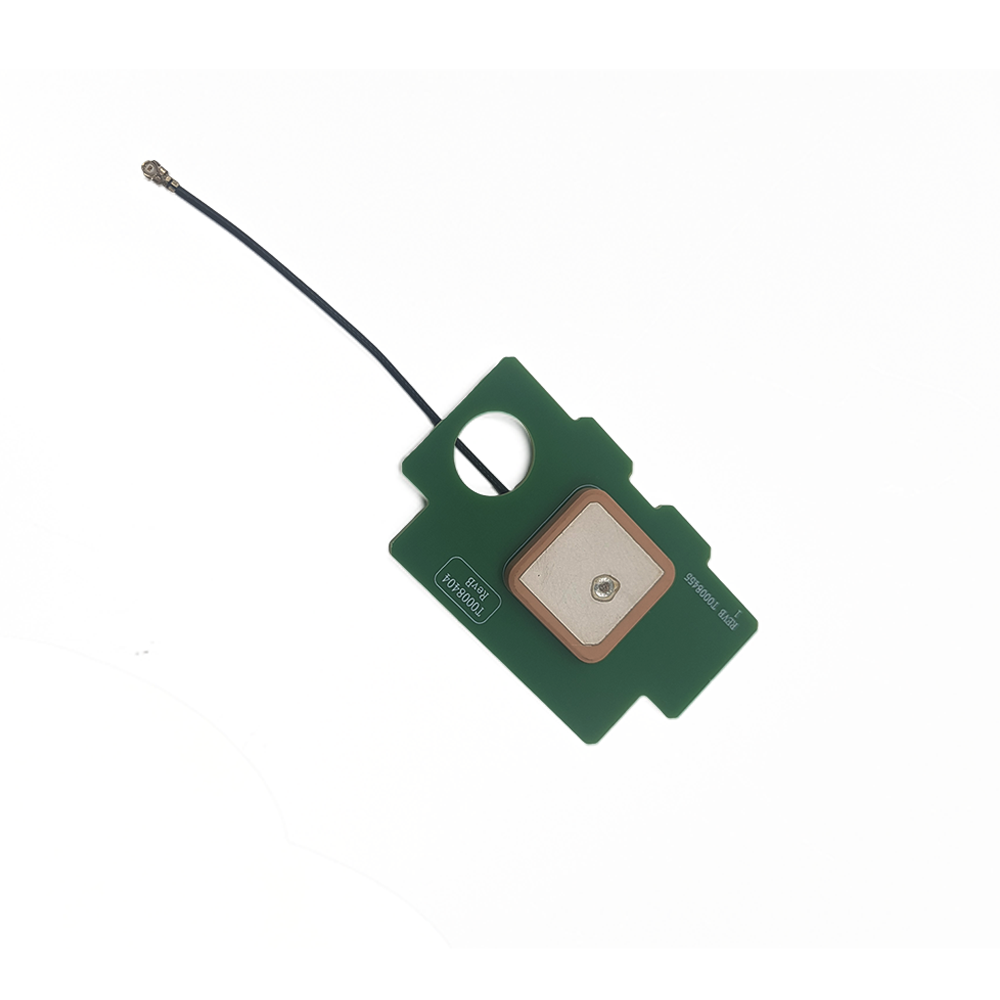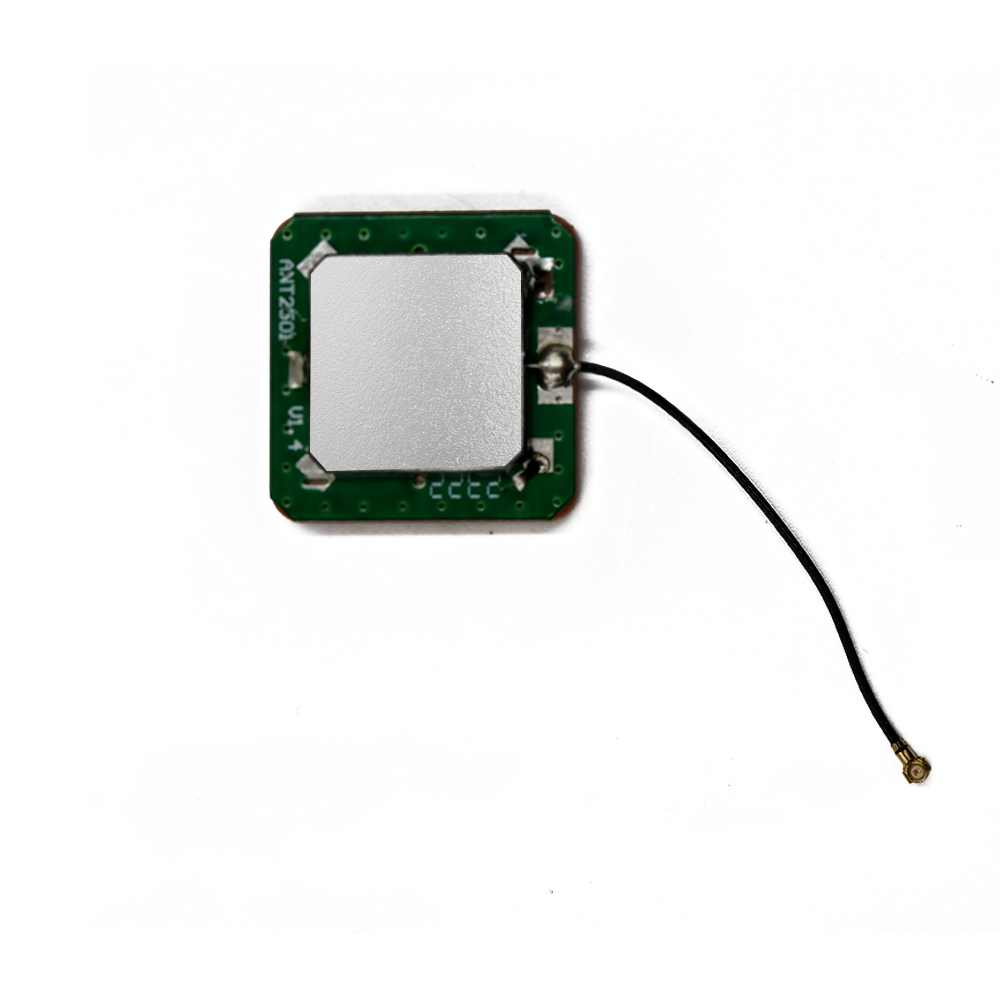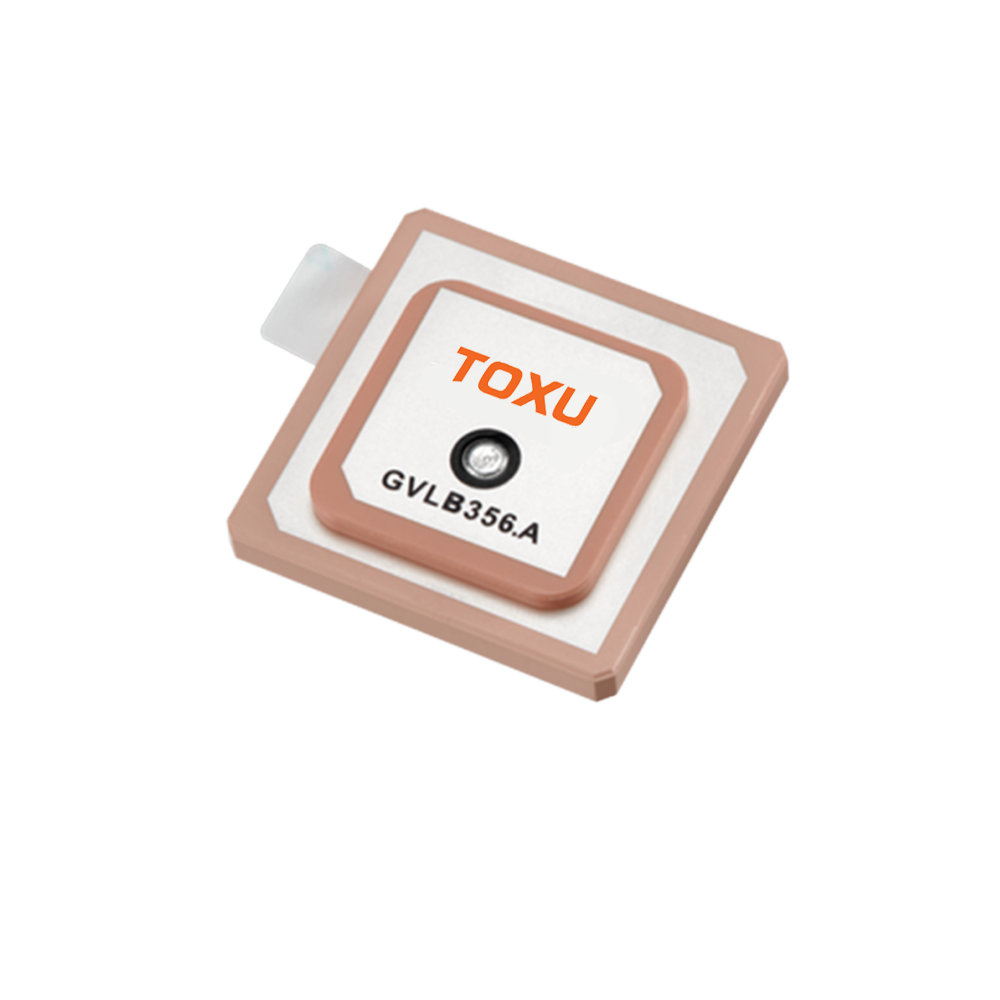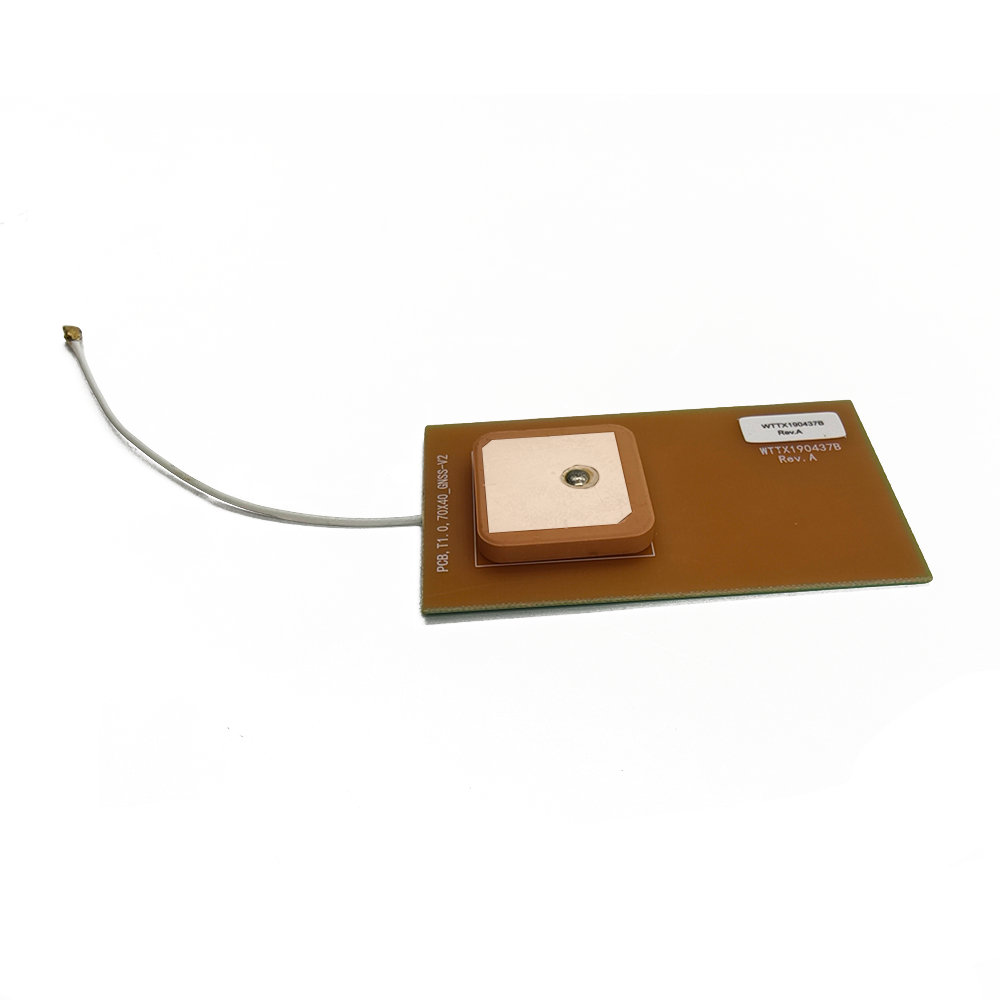The high accuracy built-in GNSS RTK antenna module’s unique combination of precision, compactness, and real-time performance has made it suitable for a diverse range of applications, from industrial automation toconsumer electronics. Its ability to deliver centimeter-level accuracy in a compact, low-power package has transformed how industries approach positioning, enabling new use cases that were previously impractical or impossible with standard GNSS technology. This section will explore the module’s key applications across industries and outline the future trends that will shape its development and adoption.
5.1 Key Applications Across Industries
The versatility of the high accuracy built-in GNSS RTK antenna module makes it applicable to a wide range of sectors, each leveraging its unique capabilities to solve specific challenges.
5.1.1 Precision Agriculture
Precision agriculture (or “smart farming”) is one of the fastest-growing applications of built-in GNSS RTK modules, as farmers seek to optimize resource use, reduce costs, and increase crop yields. The module’s centimeter-level accuracy enables precise control of agricultural machinery and equipment, transforming traditional farming practices into data-driven operations.
Key use cases in precision agriculture include:
Guided Farming Machinery: Tractors, harvesters, and planters equipped with built-in RTK modules can operate autonomously or with minimal human intervention, following pre-defined paths with sub-centimeter precision. For example, a planter using RTK can space seeds evenly (with errors of less than 3 cm) and plant at a consistent depth, ensuring uniform crop growth. This reduces seed waste by up to 15% and improves yields by ensuring optimal plant spacing.
Variable Rate Application (VRA): VRA technology uses RTK positioning to apply fertilizers, pesticides, and water at variable rates based on soil conditions, crop health, or yield maps. For instance, a drone equipped with an RTK module and a multispectral camera can map a field to identify areas with nutrient deficiencies. The RTK module ensures the drone flies a precise grid pattern, and the VRA system applies additional fertilizer only to the deficient areas, reducing fertilizer use by 20-30% and minimizing environmental impact.
Field Mapping and Boundary Detection: Farmers use RTK-enabled smartphones or tablets to map field boundaries, track crop growth, and monitor soil moisture levels. The module’s high accuracy ensures that field maps are precise, enabling accurate calculation of crop yields and efficient land management. For example, a farmer can use an RTK-enabled device to mark the boundary of a field, ensuring that irrigation systems or fencing align perfectly with the field’s edges.
The adoption of RTK modules in precision agriculture is driven by the need to address global food security challenges. With the world’s population expected to reach 9.7 billion by 2050, farmers must increase crop yields while reducing resource use—and RTK technology is a key enabler of this goal.
5.1.2 Construction and Surveying
The construction and surveying industries rely heavily on accurate positioning to ensure project safety, compliance, and efficiency. Built-in GNSS RTK modules have replaced traditional surveying equipment (such as total stations and theodolites) in many applications, as they are more portable, cost-effective, and efficient.
Key use cases in construction and surveying include:
Land Surveying: Surveyors use RTK-enabled devices (such as tablets or dedicated surveying receivers) to collect precise position data for land development, infrastructure planning, and property boundary mapping. The module’s centimeter-level accuracy ensures that survey data is reliable, reducing disputes over property boundaries and ensuring compliance with local regulations. For example, a surveyor can use an RTK-enabled tablet to map a construction site in a fraction of the time required with traditional equipment, collecting data points every few meters with sub-centimeter precision.
Construction Layout: During construction, RTK modules are used to mark the location of structural components (such as foundation corners, steel beams, and utility lines) with high accuracy. This ensures that components are aligned correctly, reducing rework and improving project timelines. For instance, a construction crew can use an RTK-enabled drone to map a site and generate a 3D model, then use an RTK-enabled receiver to mark the exact location of foundation holes, ensuring that the foundation is built to the correct dimensions.
Infrastructure Monitoring: RTK modules are used to monitor the deformation of infrastructure such as bridges, dams, and highways over time. By placing RTK-enabled sensors on the structure, engineers can track small movements (as little as 1 mm) that indicate potential structural issues. For example, an RTK sensor installed on a bridge can detect slight shifts in the bridge’s deck due to temperature changes or traffic loads, alerting engineers to potential problems before they become critical.
The use of RTK modules in construction and surveying has reduced project timelines by up to 40% and lowered costs by 30-50%, as they eliminate the need for multiple surveyors and reduce rework.
5.1.3 Autonomous Vehicles and Drones
Autonomous vehicles (AVs) and drones require high-accuracy positioning to navigate safely and efficiently. Built-in GNSS RTK modules are a critical component of their navigation systems, as they provide real-time, centimeter-level accuracy that complements other sensors (such as cameras, lidars, and radars).
Key use cases in autonomous vehicles and drones include:
Autonomous Driving: AVs use RTK modules to determine their precise position on the road, enabling them to stay in their lane, avoid obstacles, and navigate intersections. The module’s high accuracy ensures that the AV can distinguish between lanes (even in low-visibility conditions) and maintain a safe distance from other vehicles. For example, a self-driving truck equipped with an RTK module can navigate a highway with centimeter-level precision, reducing the risk of lane departure and collisions.
Drone Navigation and Mapping: Drones used for aerial mapping, infrastructure inspection, and delivery rely on RTK modules to maintain stable flight and collect accurate data. The module’s sub-centimeter accuracy ensures that drones can hover in place (even in windy conditions) and capture high-resolution images with precise geotags. For instance, a drone used to inspect a wind turbine can use an RTK module to fly a precise path around the turbine, capturing images of each blade with sub-centimeter geolocation data, enabling engineers to detect small cracks or defects.
Last-Mile Delivery: Delivery drones use RTK modules to land precisely at delivery locations, even in crowded urban environments. The module’s accuracy ensures that the drone can land on a small balcony or a designated delivery pad without damaging property or endangering people. For example, a delivery drone equipped with an RTK module can deliver a package to a customer’s balcony in a high-rise building, using the module to navigate around other buildings and avoid obstacles.
The growth of autonomous vehicles and drones is driving demand for high-accuracy RTK modules, as these technologies cannot operate safely or efficiently without precise positioning.
5.1.4 Consumer Electronics
While the adoption of built-in GNSS RTK modules in consumer electronics is still in its early stages, it is growing rapidly as manufacturers seek to differentiate their products with new features.
Key use cases in consumer electronics include:
Smartphones and Wearables: High-end smartphones (such as the iPhone 15 Pro and Samsung Galaxy S24 Ultra) and wearables (such as smartwatches) are now equipped with RTK modules, enabling features like precise outdoor navigation, fitness tracking, and augmented reality (AR) applications. For example, a smartphone with an RTK module can provide turn-by-turn navigation for hikers, with centimeter-level accuracy that ensures they stay on the correct trail—even in areas with no cellular coverage. A smartwatch with an RTK module can track a runner’s path with sub-centimeter precision, providing detailed data on pace, distance, and elevation.
Augmented Reality (AR): AR applications use RTK modules to align virtual objects with the real world, creating a more immersive experience. For example, an AR app for home design can use an RTK-enabled smartphone to place a virtual furniture item in a room, with the module ensuring that the virtual item appears in the correct position and scale relative to the real room. This enables users to visualize how furniture will look in their home before making a purchase.
Outdoor Recreation: RTK-enabled devices are used for outdoor activities such as camping, fishing, and geocaching. For example, a camper can use an RTK-enabled tablet to mark the location of their campsite, ensuring they can find their way back even in dense forests. A fisherman can use an RTK-enabled device to mark the location of a productive fishing spot, enabling them to return to the same spot on future trips.
As the cost of RTK modules decreases, they are expected to become more common in mid-range and budget consumer devices, expanding their reach to a wider audience.
5.2 Future Trends
The high accuracy built-in GNSS RTK antenna module is poised for significant growth in the coming years, driven by technological advancements, expanding reference station networks, and increasing demand from new applications. Below are the key trends that will shape the future of the module:
5.2.1 Integration with Artificial Intelligence (AI) and Machine Learning (ML)
The integration of AI and ML with RTK modules will enable more intelligent and adaptive positioning systems. AI and ML algorithms can be used to:
Improve Ambiguity Resolution: ML algorithms can learn from historical data to predict carrier phase ambiguities, reducing the time required to resolve ambiguities and increasing the success rate in challenging environments (such as urban canyons or dense forests). For example, an ML model can analyze past ambiguity resolution attempts in a specific area, identifying patterns that improve the accuracy of ambiguity predictions.
Mitigate Signal Interference: AI algorithms can detect and filter out jamming and spoofing signals, improving the reliability of the module. For instance, an AI-based anti-jamming system can analyze the characteristics of incoming signals, distinguishing between legitimate GNSS signals and jamming signals, and blocking the latter.
Optimize Power Consumption: ML algorithms can dynamically adjust the module’s power usage based on user behavior and environmental conditions. For example, an ML model can learn when a user is likely to use positioning features (such as during a morning run) and activate the module only during those times, reducing power consumption and extending battery life.
The integration of AI and ML will make RTK modules more intelligent, reliable, and efficient, expanding their use in challenging environments and battery-powered devices.
5.2.2 Expansion of Global Reference Station Networks
The availability of reference station networks is a key enabler of RTK technology, and these networks are expanding rapidly around the world. Governments, private companies, and research institutions are investing in the deployment of new reference stations, particularly in remote and underserved regions.
Key developments in reference station networks include:
Global Wide-Area RTK (WARTK) Networks: Companies like Trimble, Topcon, and u-blox are deploying global WARTK networks that provide coverage across entire continents. These networks use hundreds or thousands of reference stations to generate correction data, which is transmitted to users via cellular networks or satellite. For example, Trimble’s RTX network provides global coverage, enabling RTK modules to achieve centimeter-level accuracy anywhere in the world with cellular or satellite coverage.
Low-Cost Portable Reference Stations: The development of low-cost, portable reference stations is making RTK technology accessible to users in remote areas with no access to permanent reference stations. These portable stations are small, lightweight, and easy to set up, and they can be powered by batteries or solar panels. For example, a farmer in a remote rural area can set up a portable reference station in their field, enabling their RTK-enabled machinery to achieve centimeter-level accuracy without relying on a cellular network.
Crowdsourced Reference Stations: Crowdsourced reference station networks use data from multiple RTK-enabled devices (such as smartphones and drones) to generate correction data. This approach leverages the growing number of RTK-enabled devices to create a distributed reference network, expanding coverage and reducing the cost of deploying permanent reference stations. For example, a crowdsourced network could use data from thousands of RTK-enabled smartphones in a city to generate correction data for other users in the same area.
The expansion of reference station networks will eliminate one of the key barriers to the adoption of RTK modules—limited coverage in remote areas—making high-accuracy positioning accessible to users around the world.
5.2.3 Miniaturization and Cost Reduction
As semiconductor technology advances and manufacturing processes improve, built-in GNSS RTK modules will become even smaller and cheaper. This will enable their integration into a wider range of devices, including small wearables, IoT sensors, and low-cost consumer electronics.
Key developments in miniaturization and cost reduction include:
Advanced Semiconductor Technology: The use of smaller semiconductor process nodes (such as 5 nm and 3 nm) will enable the development of smaller, more power-efficient RTK receivers. These receivers will consume less power and occupy less space, making them suitable for ultra-compact devices like smartwatches and IoT sensors.
Integration of Components: The integration of more components into a single chip (system-on-chip, or SoC) will reduce the size and cost of RTK modules. For example, an SoC that combines the GNSS receiver, LNA, ADC, and correction processing unit into a single chip will eliminate the need for separate components, reducing the module’s size by up to 50% and lowering its cost by 30-40%.
Economies of Scale: As demand for RTK modules grows, manufacturers will be able to produce them in larger quantities, reducing per-unit costs. This will make RTK modules more affordable for mid-range and budget consumer devices, expanding their adoption beyond high-end products.
The miniaturization and cost reduction of RTK modules will open up new applications, such as tiny IoT sensors for smart cities (which can track the movement of vehicles or pedestrians with centimeter-level accuracy) and low-cost drones for hobbyists (which can achieve precise flight control).
5.2.4 Multi-Sensor Fusion
Multi-sensor fusion—the combination of data from multiple sensors (such as GNSS RTK, IMU, lidar, camera, and barometer)—will become increasingly common in RTK modules, as it enables more robust and reliable positioning.
Key benefits of multi-sensor fusion include:
Redundancy: If one sensor fails (e.g., the RTK module loses signal in an urban canyon), other sensors can compensate, ensuring that the device maintains accurate positioning. For example, an autonomous vehicle equipped with RTK, IMU, and lidar can use the IMU and lidar to navigate when the RTK module loses signal.
Improved Accuracy: Combining data from multiple sensors can improve positioning accuracy beyond what is possible with a single sensor. For example, fusing RTK data with lidar data can enable an autonomous drone to navigate in dense forests, where the RTK module may receive weak signals but the lidar can detect trees and other obstacles.
Enhanced Environmental Adaptability: Multi-sensor fusion enables RTK modules to perform well in a wide range of environments, from urban canyons to remote deserts. For example, fusing RTK data with a barometer can improve altitude accuracy, which is critical for applications like drone delivery and aviation.
The adoption of multi-sensor fusion will make RTK modules more versatile and reliable, expanding their use in challenging environments and safety-critical applications (such as autonomous driving and aviation).
5.2.5 Increased Focus on Cybersecurity
As RTK modules become more widely used in critical applications (such as autonomous vehicles, power grids, and military systems), cybersecurity will become a top priority. Jamming and spoofing attacks can compromise the accuracy of RTK modules, leading to safety risks and financial losses. To address this, manufacturers will invest in developing more secure RTK systems.
Key cybersecurity developments include:
Secure Correction Data Transmission: The use of encryption and authentication protocols (such as TLS/SSL and digital signatures) to protect correction data from tampering. For example, a WARTK network can encrypt correction data before transmitting it to users, ensuring that only authorized devices can receive and use the data.
Anti-Spoofing Algorithms: The development of advanced algorithms that can detect and mitigate spoofing attacks. For example, an anti-spoofing algorithm can analyze the characteristics of incoming GNSS signals (such as signal strength, frequency, and modulation) to identify fake signals and reject them.
Hardware-Level Security: The integration of hardware security features (such as secure elements and trusted execution environments) into RTK modules, which protect sensitive data (such as encryption keys and user credentials) from unauthorized access.
By enhancing the cybersecurity of RTK modules, manufacturers will ensure that these devices can be used safely in critical applications, driving further adoption.
Conclusion
The high accuracy built-in GNSS RTK antenna module represents a pivotal advancement in precision positioning technology, bridging the gap between the high accuracy of traditional RTK systems and the practicality of compact, low-power modules. Throughout this analysis, we have explored the module’s definition, design, working principles, advantages, challenges, applications, and future trends—highlighting its transformative impact on industries ranging from precision agriculture to consumer electronics.
At its core, the module’s strength lies in its ability to deliver centimeter-level to sub-centimeter-level accuracy in real time, enabled by carrier phase measurements and real-time differential corrections. Its compact, integrated form factor makes it suitable for integration into small, battery-powered devices, while its multi-constellation and multi-band support ensures reliability in challenging environments. These features have made the module a key enabler of innovation, driving the adoption of precision technologies in industries that were previously limited by the inaccuracies of standard GNSS systems.
However, the module is not without its challenges. Vulnerability to signal interference and blockage, dependence on reference station coverage, complexity of ambiguity resolution, cost barriers for mass adoption, and environmental sensitivity are all factors that must be addressed to unlock its full potential. Fortunately, ongoing technological advancements—such as the integration of AI/ML, expansion of reference station networks, miniaturization and cost reduction, multi-sensor fusion, and enhanced cybersecurity—are mitigating these challenges, paving the way for wider adoption.
Looking ahead, the future of the high accuracy built-in GNSS RTK antenna module is bright. As reference station networks expand to remote areas, as the cost of modules decreases, and as new applications emerge (such as AI-powered autonomous systems and smart city IoT sensors), the module will become an increasingly ubiquitous component of positioning-enabled devices. Its role in addressing global challenges—such as food security (through precision agriculture), infrastructure safety (through construction and monitoring), and sustainable transportation (through autonomous vehicles)—will only grow in importance.




































































 Language
Language
 En
En Cn
Cn Korean
Korean

 Home >
Home > 








 18665803017 (Macro)
18665803017 (Macro)













